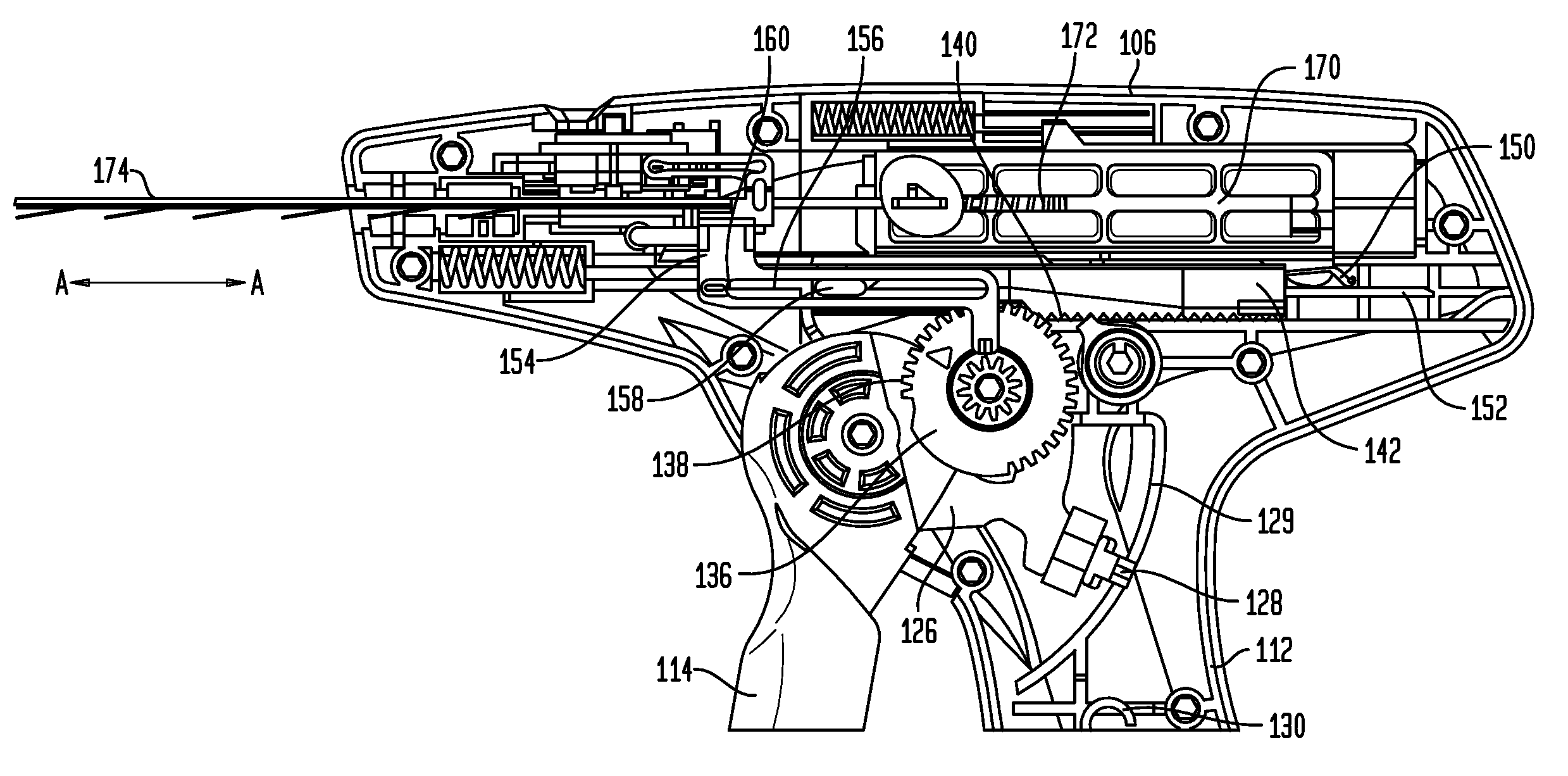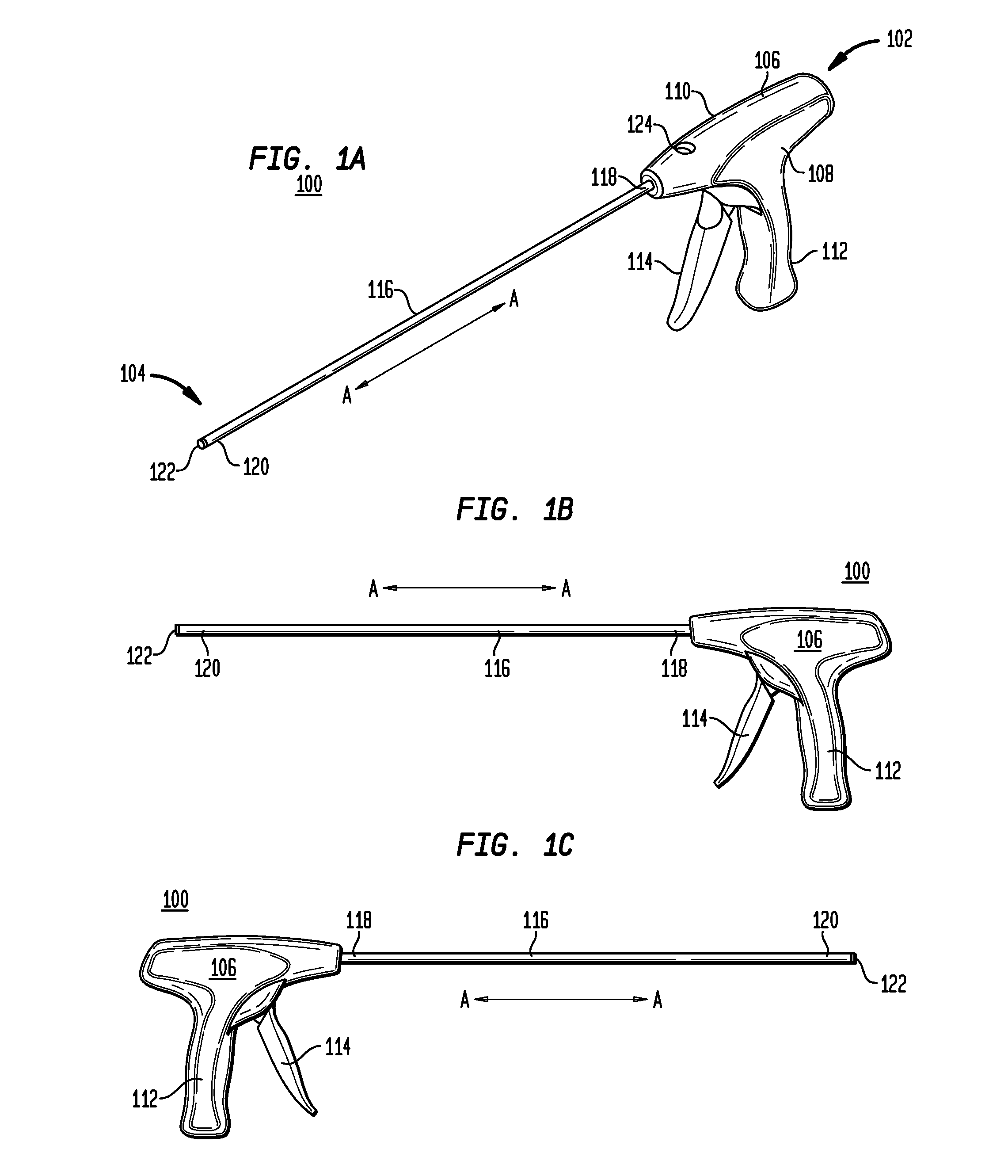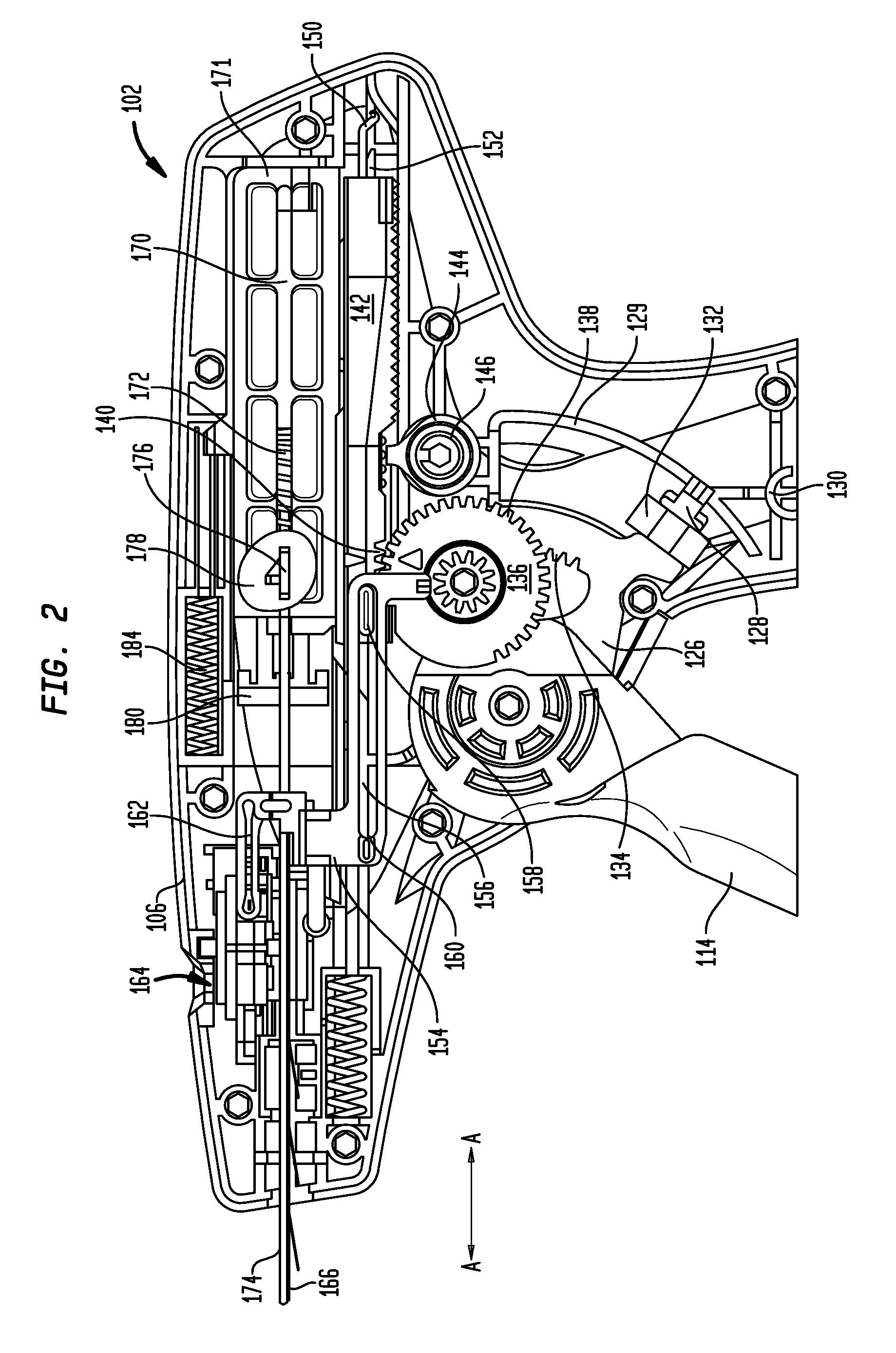Surgical fasteners, applicator instruments, and methods for deploying surgical fasteners
a technology of surgical fasteners and applicators, applied in the field of surgical fasteners, can solve the problems of prior art devices that cannot advance the fastener fast, damage the surgical fastener, and limited the ability of the first type of prior art devices to engage the fastener, so as to improve the ability of the surgical fastener to penetrate, improve the holding force, and improve the effect of strength and yet shorter tip designs
- Summary
- Abstract
- Description
- Claims
- Application Information
AI Technical Summary
Benefits of technology
Problems solved by technology
Method used
Image
Examples
Embodiment Construction
[0146]Referring to FIGS. 1A-1C, in one embodiment, an applicator instrument 100 for dispensing surgical fasteners has a proximal end 102 and a distal end 104. The applicator instrument 100 includes a housing 106 that contains a firing system for deploying the surgical fasteners. The housing 106 has a left cover 108 and a right cover 110. The left and right covers 108, 110 have lower ends forming a hand grip 112. The applicator instrument 100 preferably includes a trigger 114 that may be squeezed for dispensing the surgical fasteners from the distal end 104 of the instrument. In one embodiment, the applicator instrument 100 holds a plurality of surgical fasteners, whereby a single surgical fastener is dispensed from the distal end 104 of the applicator instrument each time the trigger 114 is squeezed. In one embodiment, the applicator instrument holds a plurality of surgical fasteners that are advanced toward the distal end of the outer tube 116 each time the trigger 114 is squeezed....
PUM
| Property | Measurement | Unit |
|---|---|---|
| diameter | aaaaa | aaaaa |
| diameter | aaaaa | aaaaa |
| outer diameter | aaaaa | aaaaa |
Abstract
Description
Claims
Application Information
 Login to View More
Login to View More - R&D
- Intellectual Property
- Life Sciences
- Materials
- Tech Scout
- Unparalleled Data Quality
- Higher Quality Content
- 60% Fewer Hallucinations
Browse by: Latest US Patents, China's latest patents, Technical Efficacy Thesaurus, Application Domain, Technology Topic, Popular Technical Reports.
© 2025 PatSnap. All rights reserved.Legal|Privacy policy|Modern Slavery Act Transparency Statement|Sitemap|About US| Contact US: help@patsnap.com



